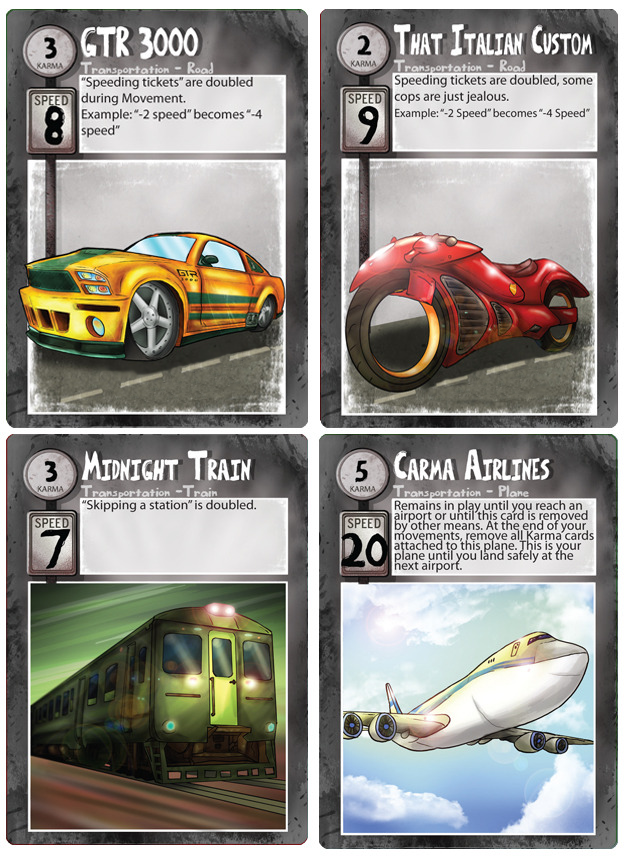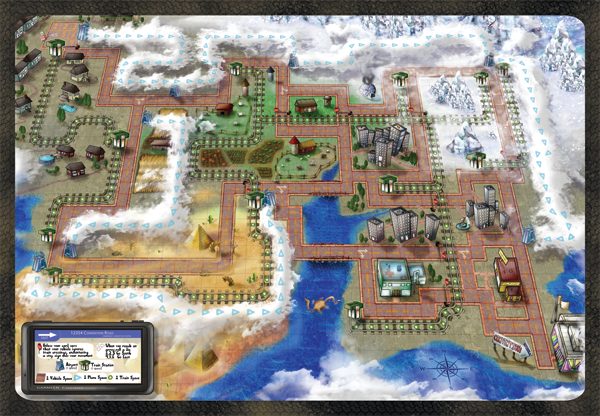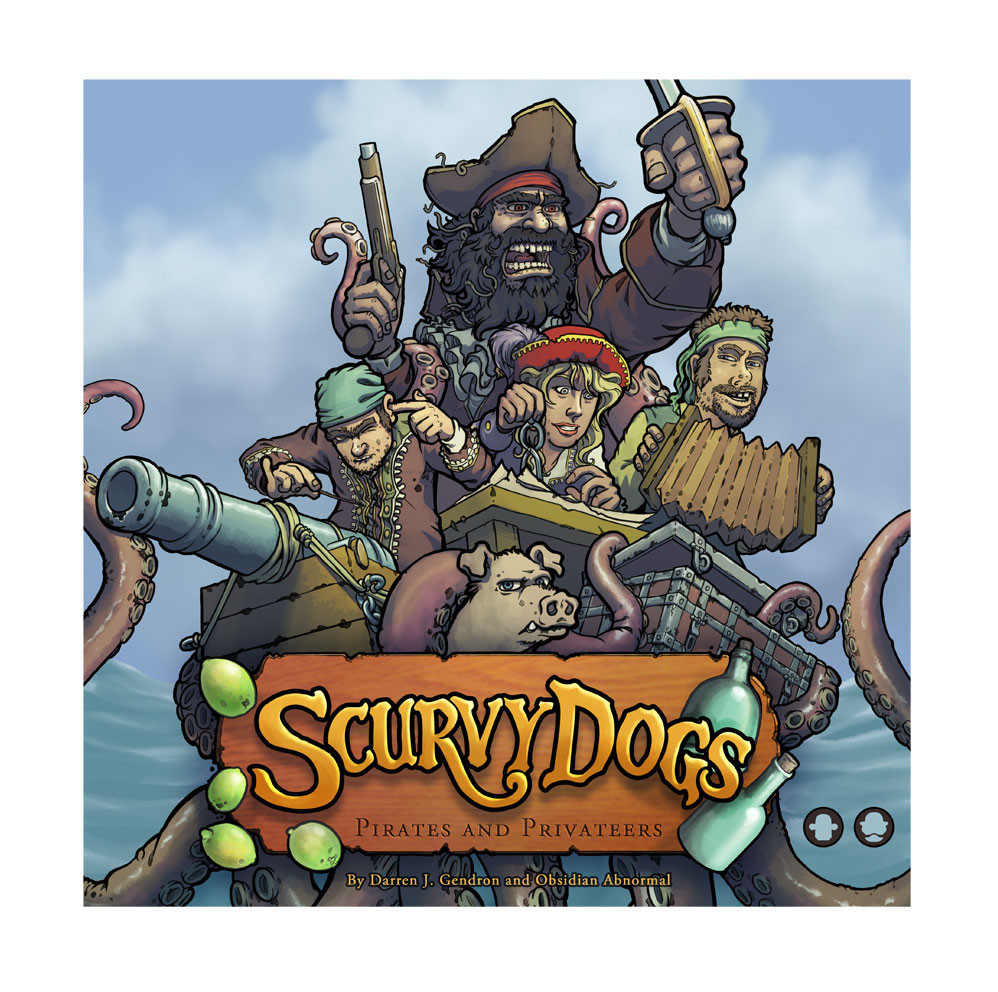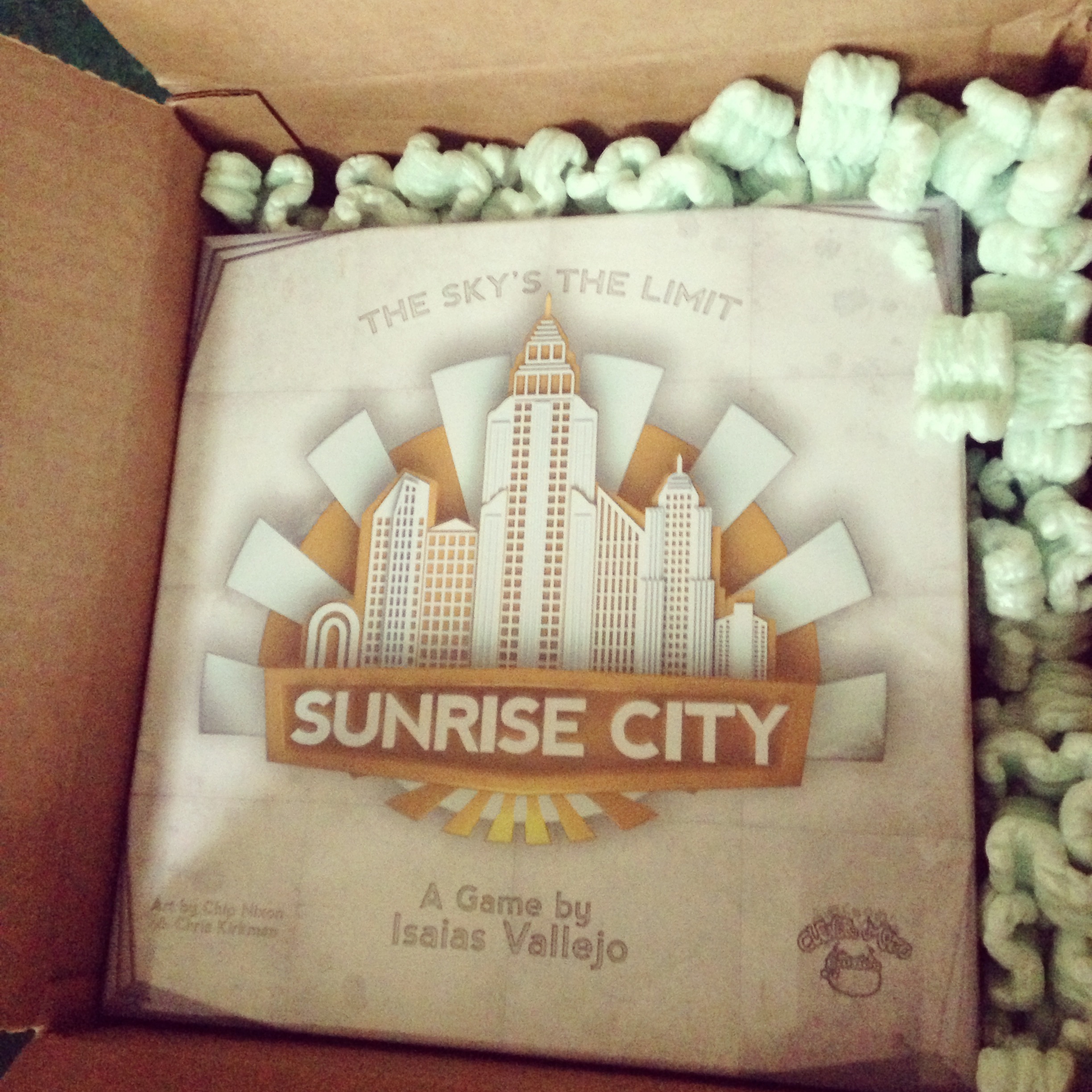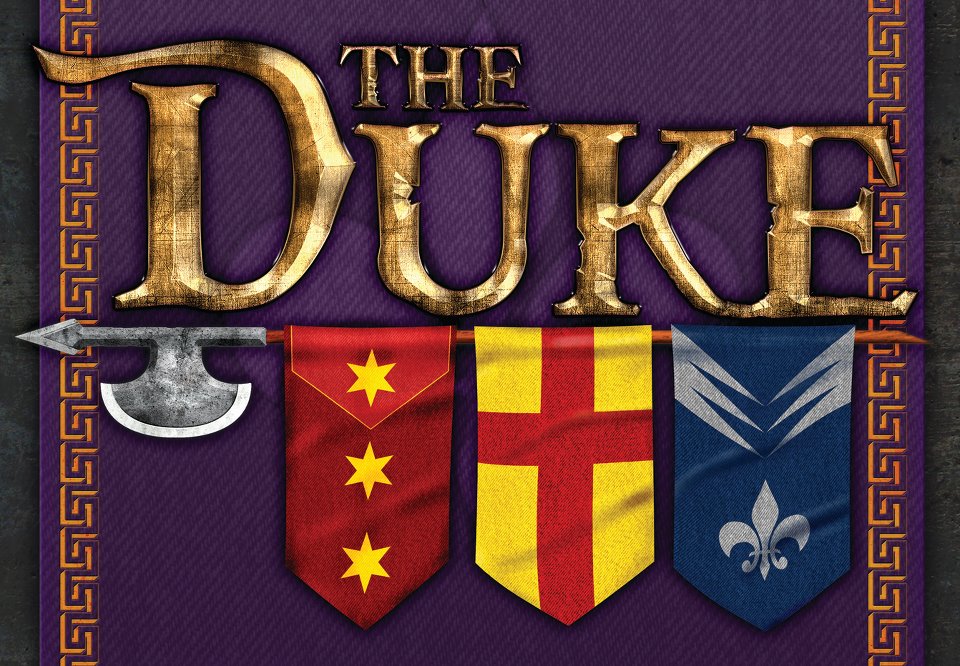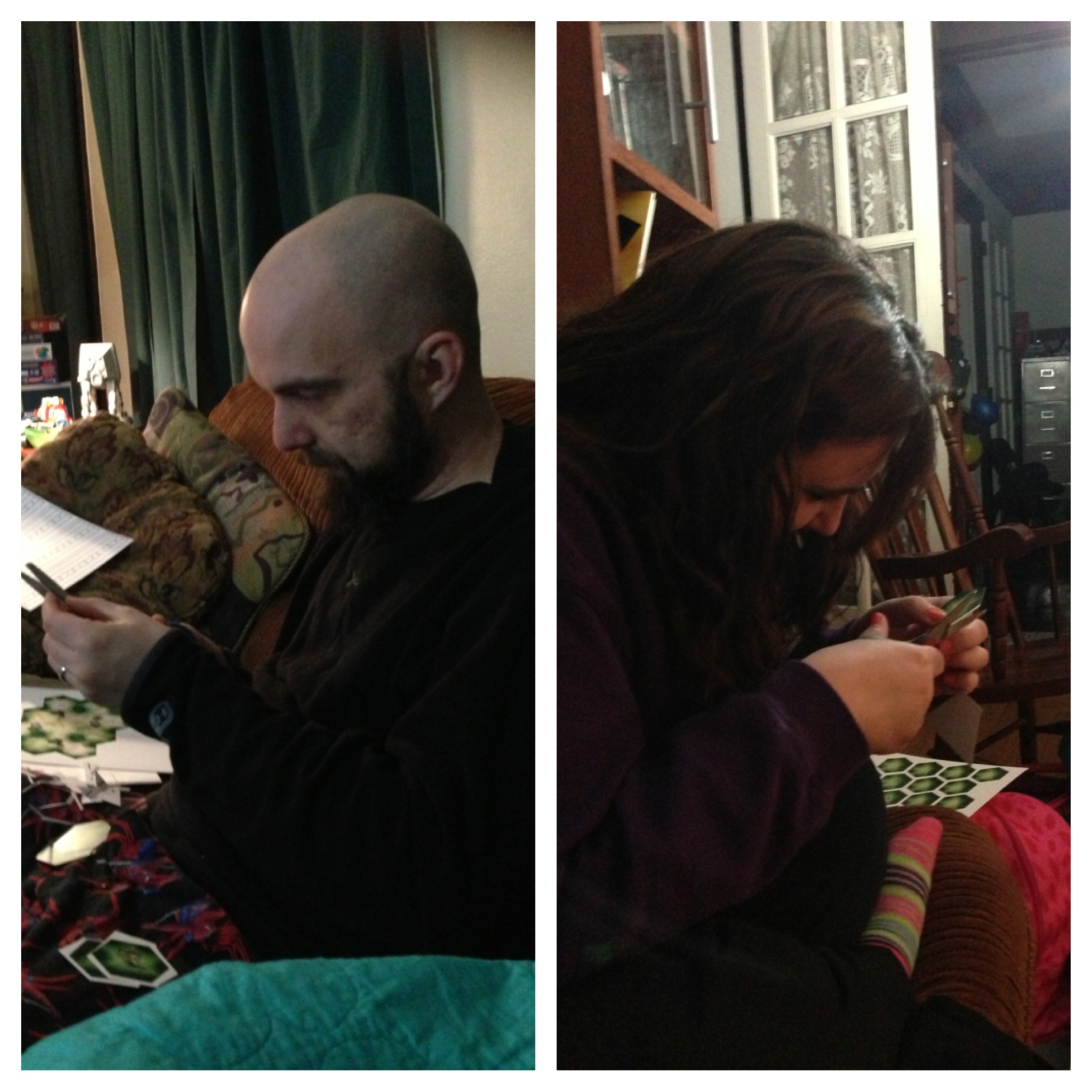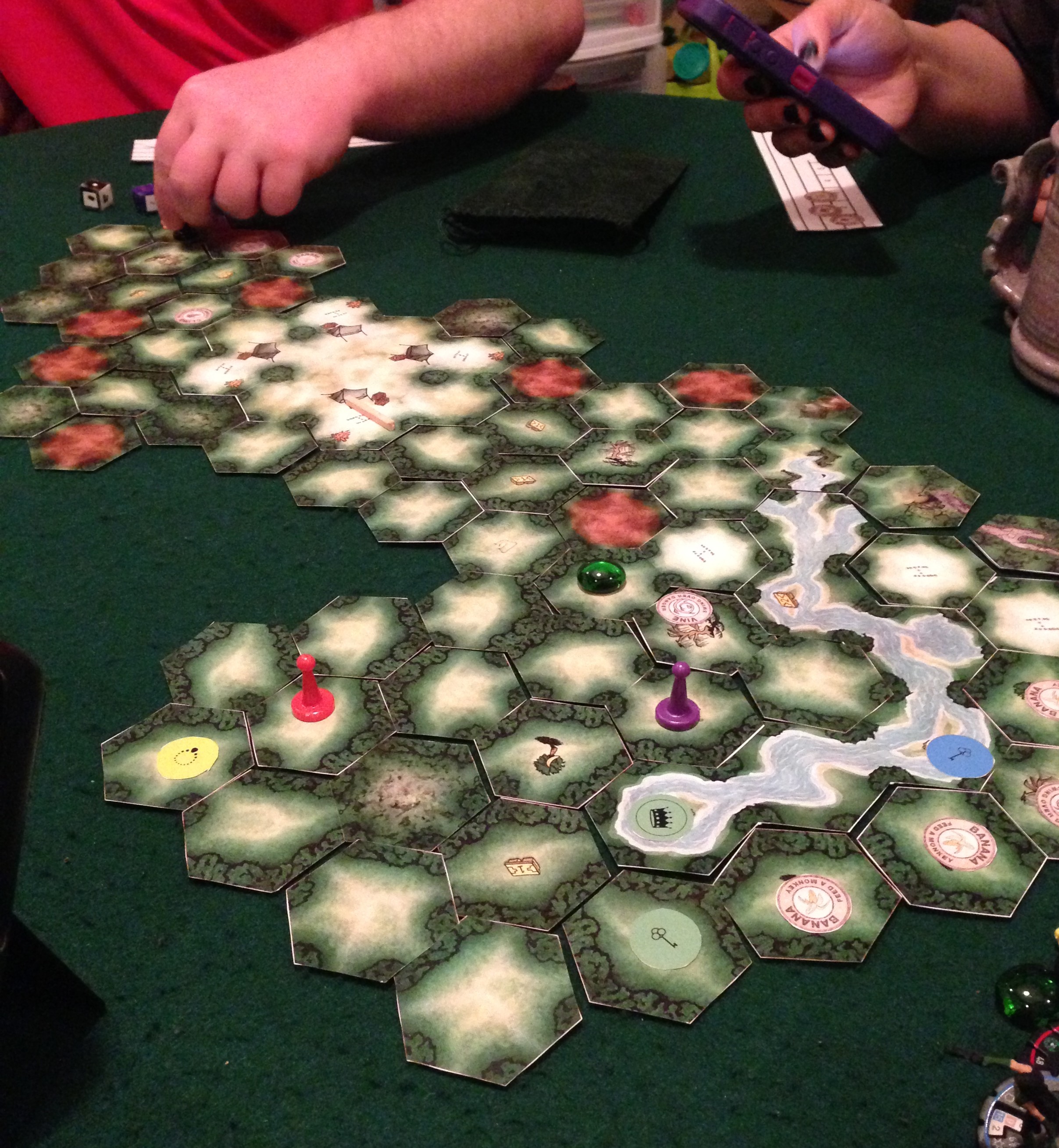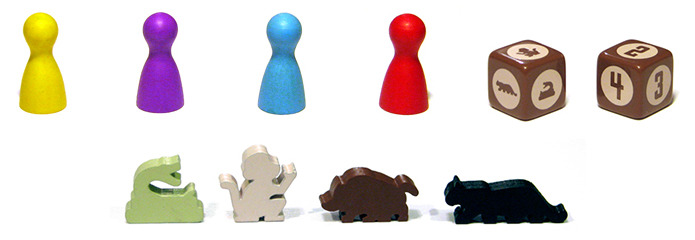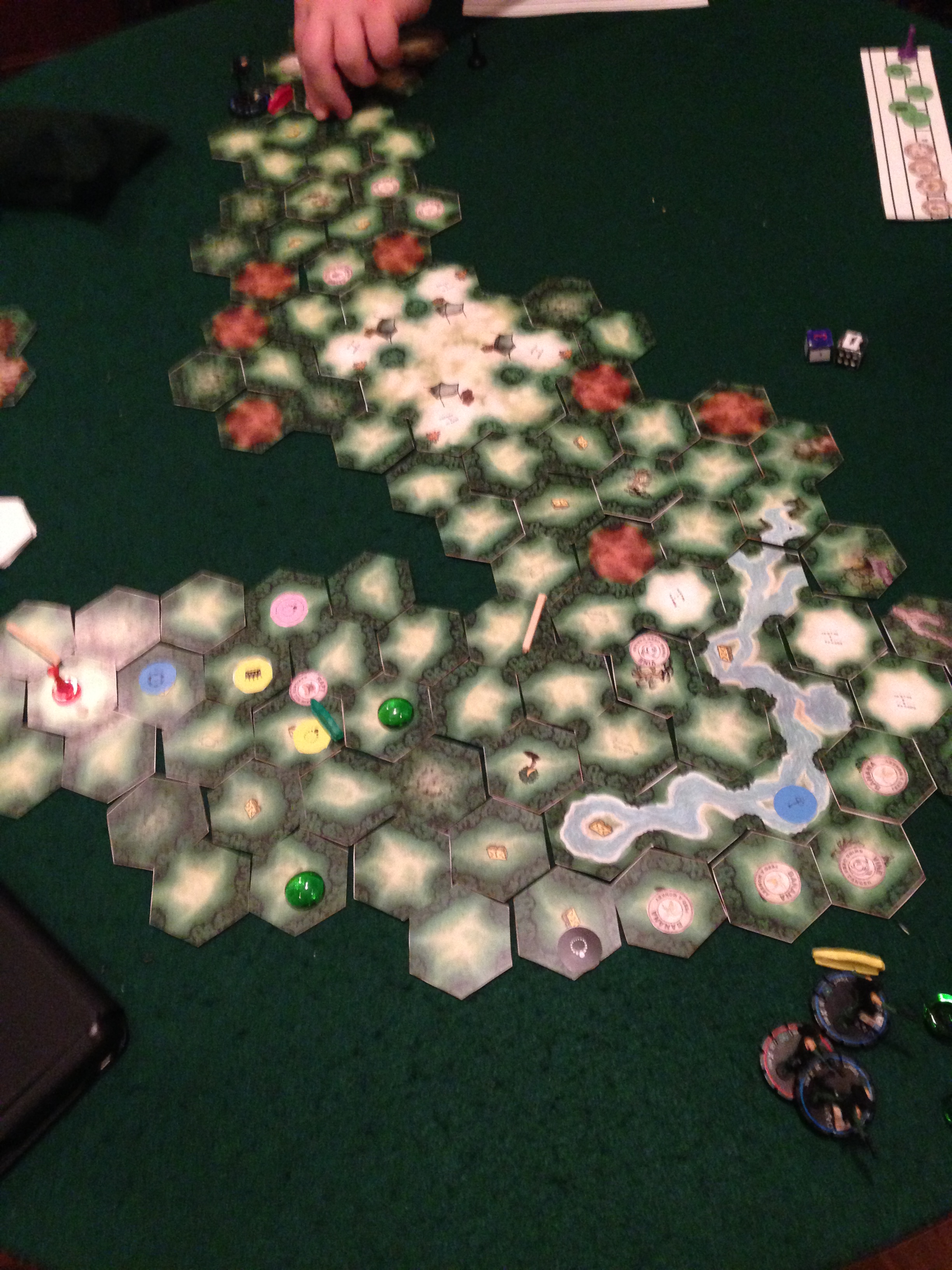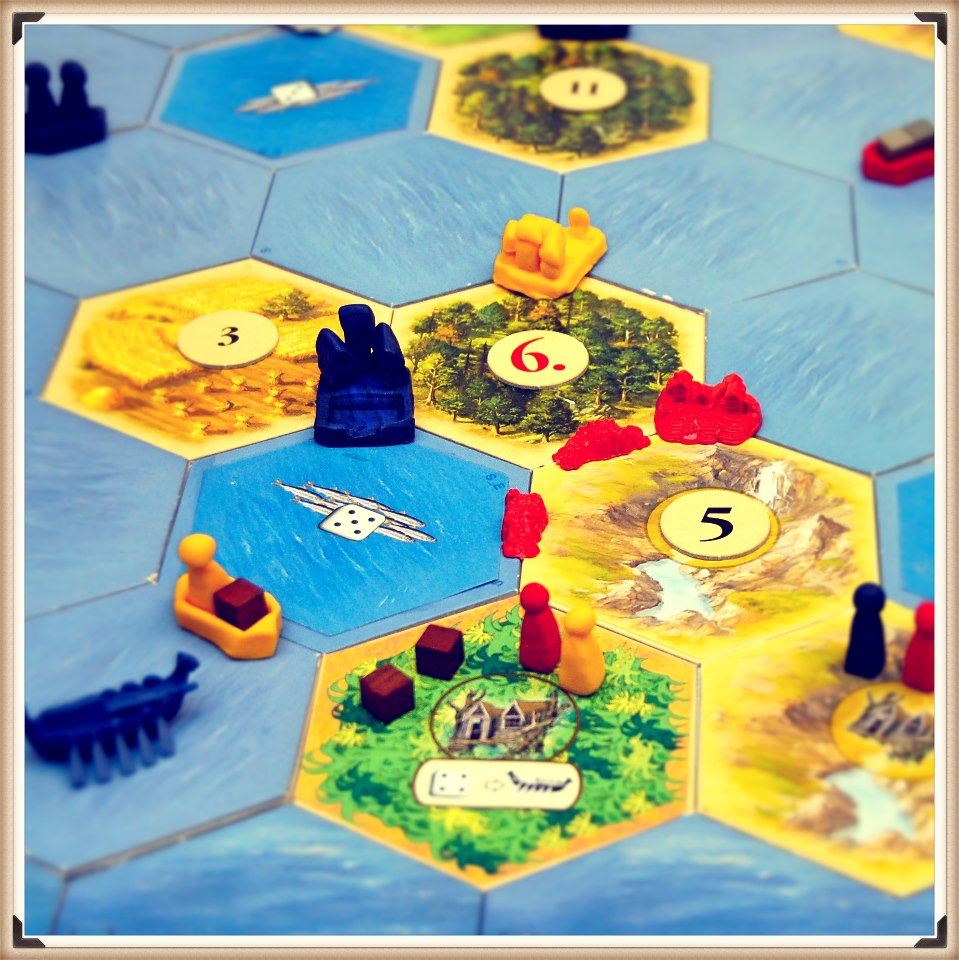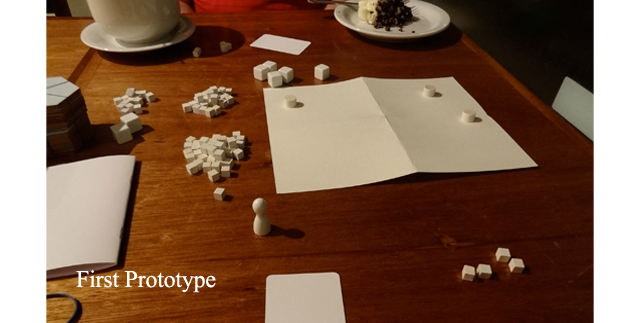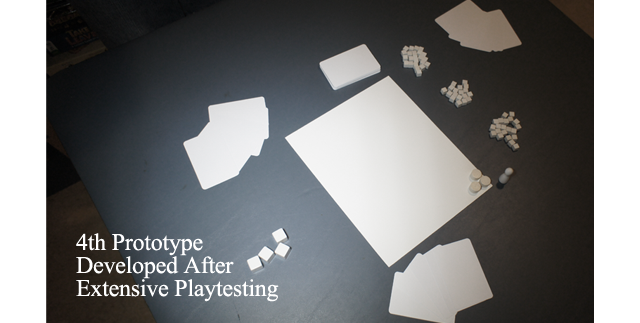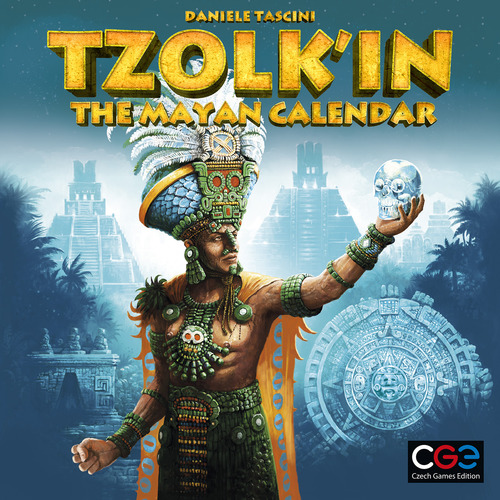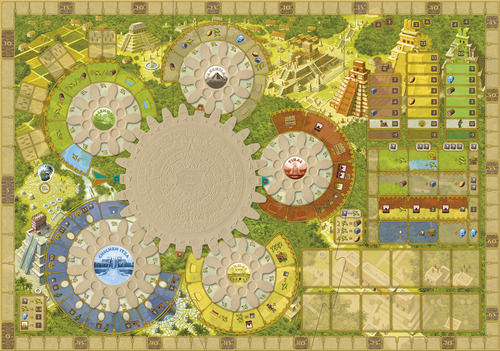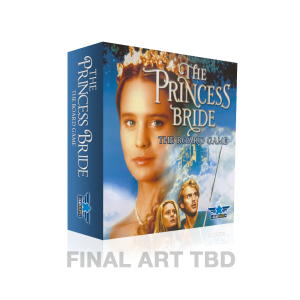 Today we have the distinct pleasure of chatting with the brains behind Foxtrot Games, and the creators of Relic Expedition, Randy Hoyt and Tyler Segel.
Today we have the distinct pleasure of chatting with the brains behind Foxtrot Games, and the creators of Relic Expedition, Randy Hoyt and Tyler Segel.
Guys, thanks so much for taking some time for us today!
First off, can you tell us a little bit about yourselves, and how Foxtrot Games came to be?
RH: My name's Randy Hoyt, and I work professionally as a Web developer and a technology educator. I teach Web development for a startup called Treehouse. I live in Orlando, Florida, with my wife and two boys, ages 6 and 1.
TS: I’m Tyler Segel. I am the Creative Director and co-owner of Factory North, a graphic design studio in Portland, Oregon. I enjoy playing board games with my wife and our friends, going to Timbers soccer games, and camping in the Pacific Northwest.
We have a family reunion every summer, and Randy and I always bring a few board games from our collections. Last summer, we struggled to convince the rest of our family to play games with us. We realized that there was a gap in the market for a game that was easy to learn and had a relatively short play time, but still had enough strategy to hold the interest of Randy and me. We brainstormed quite a bit during that weekend, and then Randy took off with our idea and came up with some solid mechanics. Being in the creative field, it was really important to me that the game looked good. There are so many fun games out there that just look slapped together. I really appreciate when game designers pay attention to those little details.
How did you first get into board gaming? What game sealed the deal for you as a gamer?
RH: I've been playing board games and card games for as long as I can remember. Every year at Christmas we would get a new family board game: games like Clue, Life, and Yahtzee. I would often play games by myself, physically moving around the table each turn and playing each player separately. I remember doing that with an old copy of Risk I found at my grandma's house; I still have that copy. I still love playing cards, the combinations of suits and ranks, plus the possibilities for amazing artwork on the face cards.
I took a bit of a break from board games during and shortly after college, but I'd have to credit two games with bringing me back into it. The first was Texas Hold 'Em. I couldn't believe that people were watching others play cards on television, and I had a lot of poker nights. And then Settlers of Catan. That was my first Euro-style game, I suppose, and I've since been playing the new ones as they come out.
TS: I grew up playing games like Monopoly here and there with my family, but I first got hooked on Euro-style games about 6 or 7 years ago. I was hanging out with some friends, and someone brought Settlers of Catan. I was immediately drawn to the mechanics and strategy of the game. There was so much going on and it was so interesting. That game really opened the door for me to board games.
Have you ever gone on an expedition of your own? Or are you both just big fans of Indiana Jones?
TS: I can’t say I’ve ever been on an expedition. I liked Indiana Jones when I was a kid, and I really thought that the jungle theme was fun and accessible for our game. I’ve always been intrigued by vintage comics, and I had seen some with a jungle theme that I had in mind for our game. There’s something about that aesthetic that really attracted me.
RH: I actually never really got into Indiana Jones; The Empire Strikes Back and Back to the Future are my favorite movies from the '80s. Space travel and time travel appeal to me more than hacking my way through a jungle with a machete. I probably wouldn't make it one day on a real relic expedition!
Take us through the design process of Relic Expedition; were there any games that influenced or inspired your design?
RH: In that initial brainstorming session at the family reunion Tyler mentioned, we came up with most of the concepts in the final game: the expanding jungle board, the backpack constraint, the wild animals, the geographic features. (We had lots of other ideas that I felt needed to be pushed off to future expansions, such as roles with special abilities as in Pandemic.) We knew there would be collectible treasures but hadn't really worked out how someone would win. I didn't want the sheer quantity of treasures collected to matter; I wanted something more subtle than that. My love of playing cards, with their two attributes (rank and suit), came through here, I think, and I gave each treasure two different attributes (color and symbol). We talk about set collection at our house a lot, both the game mechanic and the psychological principle. Having that as the core mechanic for victory really appealed to me.

I made a few different prototypes. The first was made out of cardstock and pieces cannibalized from other games. I played that with widely different rules a dozen times over two weeks, about one game a day. It was a fun process of seeing what was working and what was still lacking. I'll give you one example. In the first few games, players had to get all the way back to the basecamp board in the middle to win, and players would explore different parts of the jungle independently. I added helicopter clearings to jungle tiles for the sixth game; they really worked with the theme and really helped both of those issues.
After about a dozen games, I had a decent idea of how many tiles, animals, supplies, and treasures would make the game work best. I ordered wooden hexagon tiles from some craft Web site, and lots of game pieces from The Game Crafter, and then I cut out the tile boards from the cardboard of an Amazon shipping box. I shipped Tyler the first prototype to play—
TS: I'm the younger brother. I get his hand-me-downs.
RH: — Yeah, Tyler got the hand-me-down prototype. There were still lots of small modifications to the pieces and the mechanics. I played with the number of supplies, the amount of dense jungle, and lots of other things, swapping out pieces and changing stickers and what-not.
TS: I started by researching and referencing illustrations and digging through tons of vintage jungle comics to find the look that I wanted. After that, it just became a matter of incorporating that look into the game from a functional perspective—figuring out how to illustrate all of the pieces of the game to keep gameplay running smoothly, while keeping the aesthetic that I wanted. I feel like we achieved a good balance of everything looking good but still serving a function.
I had fun designing the animeeples. I thought it would add more to the game to have animal-shaped figures as opposed to wood blocks with stickers or cardboard.

What is it about Relic Expedition that sets it apart from other games in the genre?
TS: I think the main thing that sets it apart is its accessibility. I play board games with a lot of people, and usually at least one person in the group is playing a game for the first time. If a game is difficult to learn, it’s not very fun the first time around for the person learning it. I think Relic Expedition is easy enough to get the hang of that it is fun that first time you play it, and it just keeps getting more interesting as your understanding and strategy develop. I also like that it plays in less than an hour and that you can play it with just two people. There’s not many games out there like that.
RH: Yeah, with so many games, the first few times through feel like trial runs or practice rounds while new players learn the rules. But with Relic Expedition, the tougher strategic choices really start once you have a full backpack. This gives new players a few turns to get oriented and to understand the mechanics, and then they can fully participate and enjoy that first game.

A lot of people comment that the game is like Carcassonne because the board is made by laying out tiles, with that board having a different shape each game. But it's quite different in Relic Expedition because your explorer is actually moving from tile to tile, revealing new tiles as he explores. I'm really happy with how well the variable board mechanic and the explorer theme work together.
Give us your top three games of all time, and why you like them so much.
RH:
-
7 Wonders: Simultaneous action, multiple approaches for victory points, lots of depth packed into a one-hour game.
-
Tamsk: Abstract game with timers that you move.
-
Yahtzee: Managing probability and risk; reconsidering your strategy with each roll.
-
BONUS: Relic Expedition: Great theme, easy to learn, lots of replayability. I think it's now the game I've played the most number of times in my life.
TS:
-
Through the Ages: Civilization building game. There’s a lot of depth in trying to balance so many moving parts.
-
Pandemic: Working together to save the world! The cooperative mechanic is my favorite part about the game.
-
Citadels: Fun 2-4 player card game. It has a really fun balance of strategy and luck and super-fast game play.
Gaming is great—and we enjoy it thoroughly—but what matters most to you outside of gaming? Or is life just another big game we’re all trying to win?
TS: What matters most to me is to enjoy my life with the people I care about and create experiences with them. Gaming fits into this because it is a way to connect with my friends and family. I appreciate the opportunity to unplug, turn of the TV, and use our imaginations.
RH: Well, I do believe life is a game, an asymmetrical game where players start from different places and have different objectives—with skills and objectives changing multiple times throughout the game! I think playing tabletop games teaches you (on a small scale) many of the skills you need to be successful in life: managing resources, recognizing patterns, planning ahead, and cooperating or negotiating with others.
But for me, games are primarily about spending time with family and friends. I see making a game as a serious responsibility and a great honor. It's almost magical or religious, taking unrelated bits of wood and cardboard and transforming them into something that brings laughter and joy to people I've never met. I have been so inspired by some of the feedback reviewers have been publishing over the last couple of weeks. One player said to me in an email, "The game has made my children and friends very happy. Not sure what more you can ask for out of a game or of life."
Ok, now it’s time for the 1 word questions! Not that the questions are only one word, but that the answers should only be 1 word (or phrase)!
Oreo or Hydrox?
RH: Oreo
TS: Oreo
Galadriel or Arwen?
RH: Galadriel
TS: Arwen
Heads or Tails?
RH: Heads
TS: Heads
Favorite Batman Villain?
RH: Riddler
TS: Penguin
K.I.T.T. or the General Lee?
RH: K.I.T.T.
TS: General Lee
We would like to thank Randy and Tyler for taking the time to answer our questions and share a little more about Relic Expedition with us! Their campaign is about 65% funded, so head on over and consider backing it!
We have also been supplied with P&P prototypes of the game and will be posting our reviews of the game shortly, so stay tuned for that!
Thanks for reading and don't forget to check out our Facebook and Twitter accounts for more fun and information!
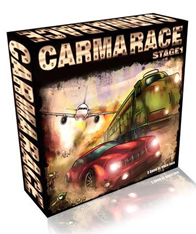 Even though we already had a Kickstarter Weekly post this week, we wanted to give you a quick preview look at a campaign being launched by Board to Death TV. That's right, some board game reviewers decided to try their hand at design, and CarmaRace was born.
Even though we already had a Kickstarter Weekly post this week, we wanted to give you a quick preview look at a campaign being launched by Board to Death TV. That's right, some board game reviewers decided to try their hand at design, and CarmaRace was born.
